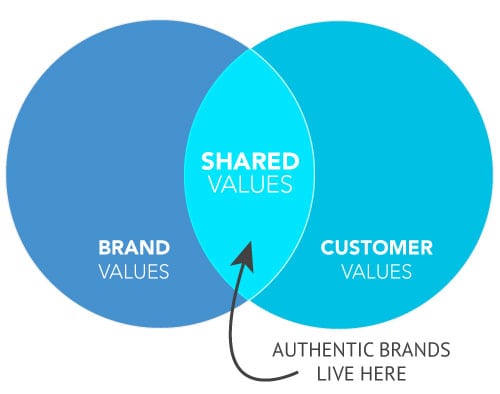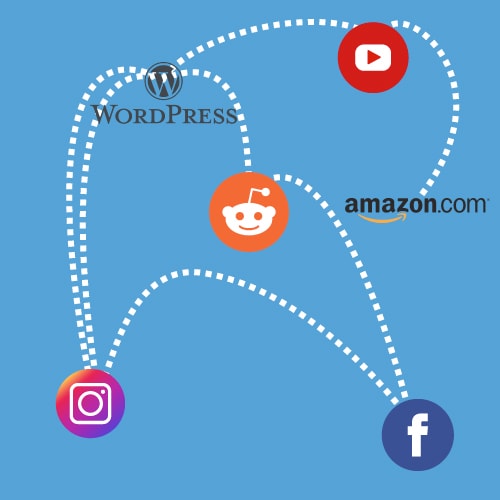Who is your target customer?
Identifying your target customer is critical to being customer-centric. That may sound obvious but you would be surprised at how often the customer is defined too broadly or not at all.
Defining your audience too broadly will not allow you to pinpoint where the customer tends to “hang out”. It will be difficult in the long run, and more expensive in the near term to capture these customers.
Let’s say that you sell a new kind of jeans that is impossible to rip or tear. Who could use those? Everybody! But “everybody” might be a bit too broad. So lets narrow it down a bit. Let’s brainstorm how these “Forever Denim” might be used.
Construction workers? Moms with kids? Skateboarders?
By narrowing it down, you can more effectively address the customer because you will be speaking directly to them. If you say “these jeans won’t rip,” people will have to imagine why that’s beneficial. But if you say “nails are no longer the enemy of your denim,” to a builder, they will see the benefit immediately. When we narrow down the target audience, we can speak to their needs more directly.
What we are looking for are Shared Values. That is the overlap between YOUR values as a brand and THEIR values as customers. When a customer finds that you share values, they are more likely to journey with you.
OK, so let’s go with moms with kids for one of our targets. There is a lot more work to be done to define some goals with this target group. For this post, we’re going to skip over that step so we can focus on how defining the target impacts the customer journey. We have a great post with free templates to help you go deeper with this on our Jumpstart Your Marketing Strategy post.

Where does the customer “hang out” online?
Where do moms with kids go when online? This isn’t official but lets say we determine that they are on Facebook, Instagram, and Pinterest. Great, now we know where to focus our energy.
What do they like to do when on those three sites? Maybe on Instagram they are looking for great new ideas. On Facebook, they like to see what people are up to and tell others when they see something funny or practical. And on Pinterest they find new places to buy interesting things.
That tells us a lot about what kind of content we need to develop for this target. We know what things they are interested in, and we know that we need to help them discover our brand, and then research it. We can almost build a plan on that.
For an in-depth exploration of how to build a marketing strategy including target audience profiles, and downloadable templates see our posts here:
A new way to think about marketing
A few years ago, Google did a study and made some observations that have become the new rule of marketing. There are really two. One was the Zero Moment of Truth or ZMOT. This parallels the *Research* part of the Customer Journey mention in another post. It says you need to be in front of the customer when they are ready to make a purchase. It’s hard to disagree with that. For more info on this, here is some outstanding information: Zero moment of truth (ZMOT) decision-making moment – Think with Google
The second observation is that before making a purchase, a customer tends to spend an average of 7 hours with a brand. Those 7 hours are made up of multiple touches, the study found it’s an average of 11. And those 11 touches happen in 4 different locations.
A new rule for marketing – 7-11-4
We used to say that it takes 7 different impressions before a consumer takes notice of a brand. They may drive by a road sign 6 times and not notice it. Then on the 7th drive-by “oh look, a new sign.” My guess is that this same 7-11-4 mechanic was in operation then as well, we just didn’t have as much data to support it.
To break it down a bit, the 11 touches could be a social media post, an email, a website visit, reading a review, searching on Google, etc. They have 11 different experiences with the brand.
These touches happen across 4 different “locations.” So Instagram, Facebook, YouTube, Google, a paid re-marketing ad, the brand website, a review on a forum are all different locations.
Now we start to see why it’s important to know where the customer spends time and how they get information. We can advertise or spend time building our Twitter followers, but if our Moms with Kids are not on Twitter, we are missing their attention.
What does your customer profile need to have?
We cover this fully in our post on Jumpstarting your Marketing. I encourage you to follow that series, using the free templates provided to help develop a full strategy.
In brief, you need to know who your customer is demographically, and then where they spend their time online (which networks and channels). It is important to be specific here. Don’t answer the question “who is my target audience” with “everyone!” Find those key segments that represent a large portion of your customers.
Going back to our Moms with Kids, we know that parents of kids wearing jeans are probably between 27 and lets say 48. And moms are generally female. That is our demographic info.
Now, we ask, what do they value? They like saving money, durable clothing, and giving their children the best.
And where do they tend to hang out? Probably Instagram, Pinterest and Facebook.
So we could say that Forever Denim is a good fit for Moms with Kids (females aged 27 to 48) who want the a quality product for a good value. They frequent Instagram, Facebook and Pinterest.
Our marketing plan for this group then will focus on those three locations as that is likely where the customer will start their journey and look for information.
A trail of crumbs… a wandering journey
Since our consumers need to connect with us 11 times across 4 locations, it is important to leverage one to lead to the next.
Oh, it’s satisfying to see your likes on a post climb (and there is good reason to strive for that), but what is more important is that the post drives them to the next point of engagement. Did they go to the website next? Sign up for email?

In a dream world, a customer would see you post and like it (touch 1, location 1), maybe make a comment and tag someone else in it. Then they would go to your profile and click on your website (touch 2, location 2). Then they sign up for your email newsletter and peruse your FAQs. They see something that raises a question so they use your Live Chat feature (you have one, right?) to ask the question (touch 3).
After they close the chat, they get an email thanking them for the chat (touch 4, location 4). It also offers a 10% discount on the product they asked about. They think, I wonder what other people are saying so they go online and search your product (touch 5, location 5). Then they go read a review on Reddit (touch 6, location 6). The reviewer did a video that the consumer watches (touch 7, location 7). Then they go make dinner.
Two days later, they see another post (touch 8) that reminds them of your product. They go back to Google and search for a coupon (touch 9). Then they go to the website (touch 10), put the product in a cart and purchase it. Whew.
It seems like a lot, but if you think of your own patterns of shopping behavior, its not too far fetched.
One thing leads to the next. The Journey wanders and doubles back a few times until the purchase is made. Each effort we make should engage the customer and lead them to another touch point.
For more on this, we posted about our marketing system called CAMPAV that you can read about here:
If You Don’t Have These 4 Components in Your Marketing Plan You Are Wasting Time and Money
Of course, it doesn’t end at purchase right? That is just the beginning. We’ll explore this more in the future. We do talk a bit about it in our recommended next post on the Customer Journey that you can find below.
RECOMMENDED NEXT POST:
Getting Started With the Customer Journey
